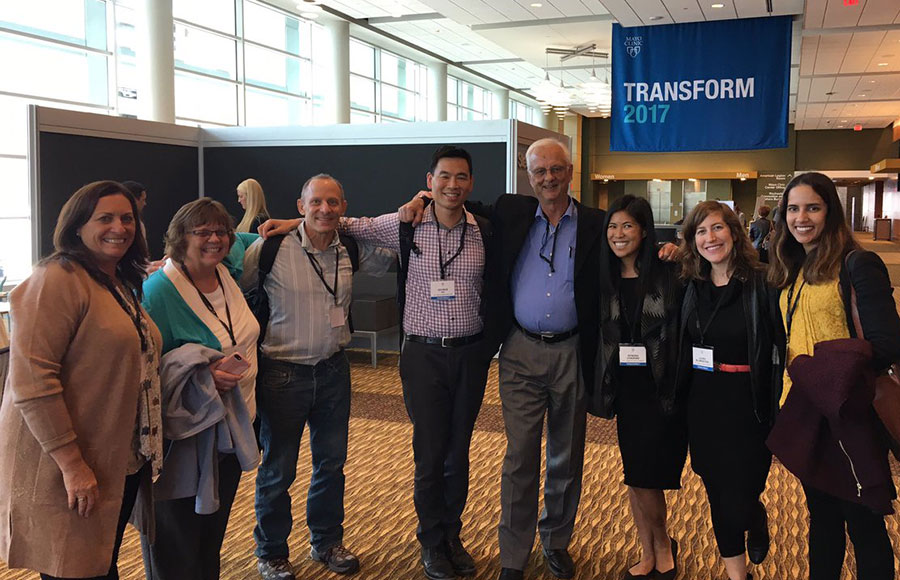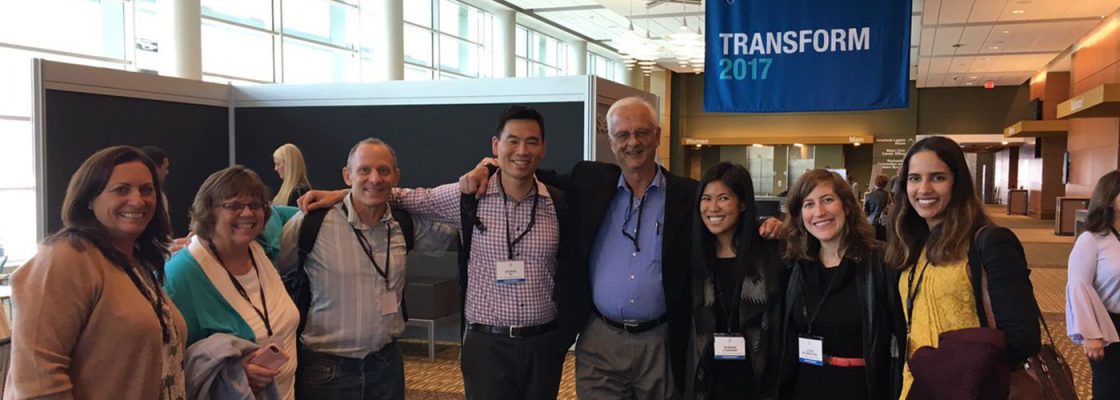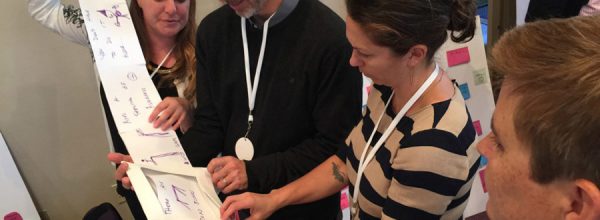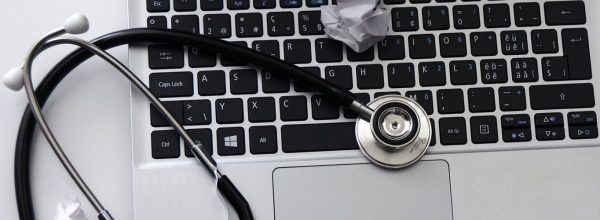CCI staff and our Technology Hub teams just returned from Mayo Transform, an annual health care innovation conference that brings together providers, payers, policymakers, designers, technologists, and more.

This year – as the country grapples with payment reform, political uncertainty, health care affordability, and patient access – the gathering focused on “closing the gap between people and health.”
What does that mean for safety net health systems? Here are our top takeaways:
1. Transformation takes a long time.
When our crew sat down with Mayo’s Center for Innovation, we learned that Mayo’s own primary care redesign model has taken five years – and it still isn’t finished. Even if you’re a world-renowned medical practice with a thriving innovation culture, change doesn’t happen overnight.
2. The safety net isn’t the only one struggling with care transitions.
At the conference, we heard so many stories that paralleled our own challenges. But one stood out: The Mayo Clinic has been grappling with the fact that many of cancer patients in remission continue to see their oncologists for primary care check-ups. These are obviously very costly appointments and limit specialists’ availability to see new patients. So, Mayo began looking for ways to transition patients in remission back to primary care. (Doesn’t that ring a bell?) Asked why they don’t return to primary care, patients responded that their oncologists had “gone through the journey with them” – diagnosis, treatment, and ultimately remission. Because their primary care physicians didn’t play a role in that journey, patients felt like they would be less knowledgeable about their health history.
As a result, Mayo is now testing ways to involve primary care providers from the beginning of cancer patients’ journeys, such as deploying Skype and other virtual platforms to involve primary care physicians at key stages of treatment, not just following remission.
3. We’re all putting social determinants of health to work.
It didn’t matter if we were talking about data mining, skyrocketing drug prices, or diabetes prevention. SDOH was on everyone’s lips and a huge part of every new initiative unveiled at Mayo Transform. Whole-person health care is now mainstream.
4. Community investment starts in medical school.
We learned that the University of Texas at Austin’s Dell Medical School includes community members in its interview process to gauge applicants’ bedside manner. This new medical school’s curriculum is also designed to respond to the actual health needs of the patients in the school’s backyard, Travis County.
As our organizations plan their own residency programs, we’re now thinking about how we might revamp our interview processes to involve our communities and reach the kind of candidates we really want.
5. We can all learn from our patients.
Dell Medical School on “experience groups,” where patients with similar medical circumstances and experiences discuss their daily lives. Through these groups, Dell discovered, for instance, some diabetes patients weren’t taking their insulin simply because they didn’t own refrigerators. When we spent time with Mayo’s Center for Innovation, we heard about a recent experiment with text messaging. The widespread hypothesis is that given the ability to text their doctors directly, patients will abuse that communication channel; but when Mayo gave a handful of patients that capability, its patients never texted before 7 a.m. or 7 p.m.
Never make assumptions!
6. Ridesharing technology can improve no-show rates.
Before the conference started, we huddled with Hennepin County Medical Center’s innovations group, Upstream Health Innovations, to talk about its various programs. Our Hubs were particularly intrigued by Hitch Health, software that communicates with the electronic health record and Lyft. (Read more about it here.)
We’re already thinking about how this new platform could work in our own health systems.
7. Let patients talk uninterrupted.
Danielle Ofri, an internist at Bellevue Hospital in New York City, explained how conversation between doctors and patients is the most powerful, flexible, cost-effective health technology out there. Ofri had read a Swiss study that said when doctors didn’t interrupt, patients talked 92 seconds on average during their clinical visits. That didn’t match physicians’ fears of endless monologuing, so she decided to give it a try.
Turns out, Ofri’s patients on average talked for less than 2 minutes. Even her most loquacious appointment – a woman known to inundate doctors with her entire medical history, a long list of her mother’s ailments, and critiques of the Metropolitan Opera – clocked in at only 4 minutes and 7 seconds. Ofri recalled, “It was an amazing revelation. Although it felt long, it wasn’t actually that long. And when we were done we had a list. It was long, but it was finite. And once we had a list, we could work on a plan.” More amazingly, the patient told Ofri, “Just talking about all this has actually made me feel better.” Ofri felt better too.
Our Hubs were struck by this experiment. We immediately began thinking, “What might this look like in our clinics? How would it change our approach to scheduling patients visits?”
8. The safety net is on the cutting edge of innovation.
Where other systems feel limited by their fee-for-service models to try new things, our health centers know that it’s a moral imperative to improve access through new transportation services, telehealth, e-consults, texting, and mobile health. We may not be getting paid for it yet, but we’re taking action because it’s the right thing to do.
Find this useful or interesting? We’re constantly sharing stuff like this. Sign up to receive our newsletter to stay in the loop.



